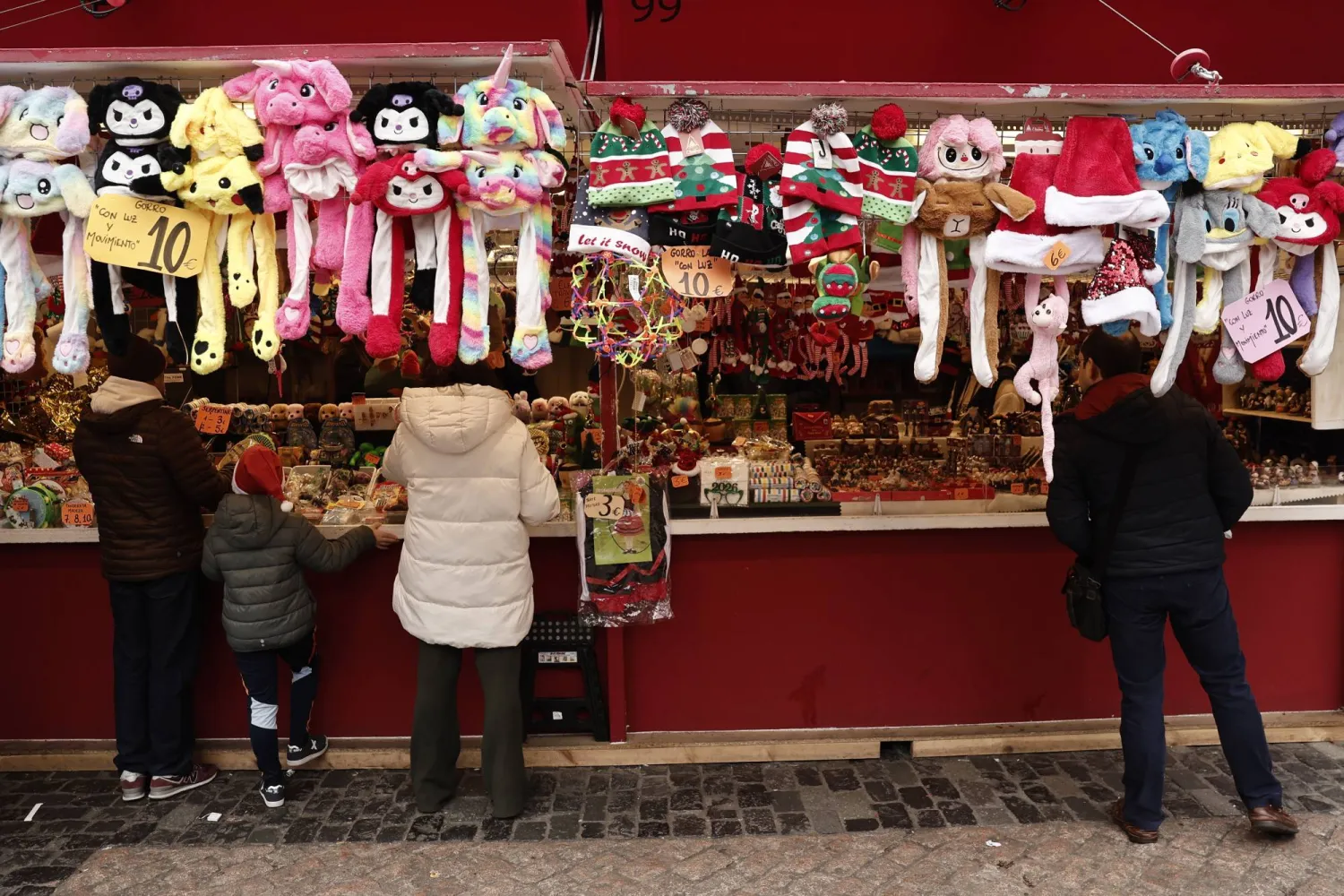Belgrade’s iconic Hotel Yugoslavia, once a symbol of progress in the former socialist state of Yugoslavia that broke apart in the 1990s and a favorite gathering place for local residents as well as world leaders, now stands in eerie silence awaiting its likely demolition.
The once-bustling landmark — a leading example of modernist architecture when it was built in the 1960s — has fallen into disrepair, its future clouded by debates over its historical significance and the push for advanced development.
Its white facade, once polished and welcoming, is marred by crumbling concrete and graffiti. Inside, debris litters once-pristine red carpeted floors, while scattered pieces of broken furniture hint at the opulence that once filled its rooms and lobbies: Faded velvet armchairs, torn bed mattresses, sagging curtains and broken windows are all that remain of the luxury that once was. The wood-paneled presidential suite where top dignitaries would stay is now home to pigeons that fly in through the shattered glass.
As the Serbian capital grapples with hectic growth and new high-rises that dot its skyline, the almost certain fate of the hotel has sparked controversy, with some seeing it as a relic worth preserving and others envisioning new possibilities rising from its ruins.
In its heyday after it received its first guests in 1969, it was a five-star hotel boasting one of the biggest chandeliers in the world made of 40,000 Swarovski crystals and 5,000 bulbs.
Its guest list included Queen Elizabeth II, United States Presidents Richard Nixon and Jimmy Carter, astronauts including Neil Armstrong, and Belgian and Dutch royals.
The hotel, with a spectacular view of the Danube River in the capital's New Belgrade district, was damaged in NATO bombing in 1999 in an armed intervention over Serbia’s bloody crackdown on Kosovo Albanian separatists.
Only parts of the hotel were fully renovated, and it kept receiving guests until a few months ago, when private investors announced plans to demolish the structure and build a new one in its place. Two 150-meter (500-foot) -tall towers containing a luxury hotel, offices and private apartments will be built, according to the new owners.
Asked why the landmark hotel needs to be completely destroyed instead of incorporated into the new project, Zivorad Vasic, a spokesperson for the investors, said there were several reasons.
"One is during the bombing in 1999, quite a lot of parts of the hotel were destroyed. Second, the hospitality industry completely and tremendously changed. When you look at hotels now and how they looked before, they were completely different,” he said.
Architect and tourist guide Matija Zlatanovic, who often takes tourists to the hotel to explain its rich history, said the plans for the new hotel are “quite controversial," especially because “there are valid concerns about the size of the buildings that are going to be erected here.”
“It follows the trend of towerization of Belgrade and the erection of enormous high rises all over," he said. “And we yet have to see about the impact that they’re going to have on this neighborhood.”
Neighbors who face living in the future shadows of the planned skyscrapers are not happy. Some are holding weekly protests against the new project, saying they will stop the demolition with their bodies if necessary.
Svetlana Gojun, one of the protesters, said Hotel Yugoslavia “represents a huge part of our history.”
“Half the world came to this hotel, from actors, musicians, politicians, writers,” she said. “Everyone is tied to this hotel. The whole world knows about that hotel. And now we will allow something like that to disappear?”
Belgrade's Landmark Hotel Yugoslavia Faces Likely Demolition, With Many Opposed

A woman walks past Hotel Yugoslavia, once a symbol of progress in the former socialist state of Yugoslavia that broke apart in the 1990s and a favorite gathering place for local residents as well as world leaders, in Belgrade, Serbia, Thursday, Oct. 3, 2024. (AP Photo/Darko Vojinovic)

Belgrade's Landmark Hotel Yugoslavia Faces Likely Demolition, With Many Opposed

A woman walks past Hotel Yugoslavia, once a symbol of progress in the former socialist state of Yugoslavia that broke apart in the 1990s and a favorite gathering place for local residents as well as world leaders, in Belgrade, Serbia, Thursday, Oct. 3, 2024. (AP Photo/Darko Vojinovic)
لم تشترك بعد
انشئ حساباً خاصاً بك لتحصل على أخبار مخصصة لك ولتتمتع بخاصية حفظ المقالات وتتلقى نشراتنا البريدية المتنوعة







